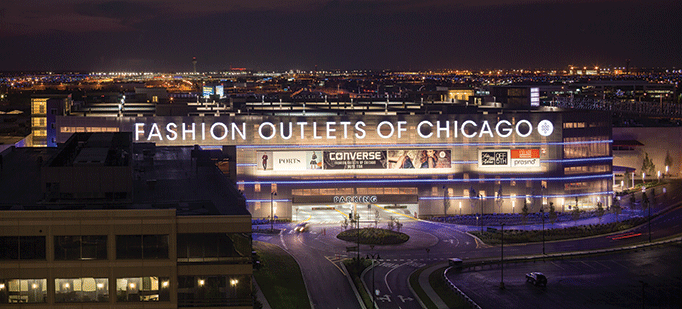
A paucity of new projects in developed markets such as the U.S. and parts of Europe notwithstanding, top design firms say business is brisk and becoming more so. “Business is good, but changing,” said Tipton Housewright, a principal of Omniplan, a design firm with offices in Dallas and Phoenix. “Online retail is changing brick-and-mortar retail. It is making food more important — you can’t get together with friends and have dinner online. It’s also making stores smaller and more about showing merchandise than stocking it.
And though not many new malls are being built in the U.S., outlet development is humming along, and there is plenty of redevelopment, notes Jeff Gunning, a senior vice president in the Dallas offices of Baltimore-based RTKL. “In the U.S. -our market is characterized by developers trying to maintain market share at their best properties,” said Gunning. “They are renovating and expanding their best properties.”
Sometimes a renovation extends to repositioning, according to Steve Dwoskin, a principal at Seattle-based Callison. “For example, there are many instances where a department store anchor goes dark. That is usually considered bad, but it can also be an opportunity. You had a department store that was failing and dragging the center down. Now you can renovate and put in a new anchor, which may bring in new in-line tenants, including restaurants and theaters. By the end of the process, the owner has repositioned the center.”
Owners are also adding other uses to their properties, including housing, offices and hotels, as Macerich is doing at Tysons Corner Center, notes Gunning. “They are adding a Hyatt Hotel and a residential tower over offices at the property.” All this was facilitated by the addition of a transit stop at Tysons, enabling people to commute to and from the property. Similarly, parking garages freed up surface area for additional buildings, Gunning points out.
Adding other uses can bring a property to life, with office workers populating the place by day, and residents doing so at night. Architects, for their part, can add a variety of touches to bring an urban, downtown feel to these projects. Adding uses does not always entail adding buildings, however. Instead, vacant retail space can be repurposed, observes Housewright, citing examples where vacant store space has been turned into art exhibits, libraries, health clinics, business offices and such like. “We’ve done a lot of this over the years, especially in markets that are overretailed,” Housewright said.
Entertainment is key to such projects, architects say. “At one time, entertainment was a movie theater and some kind of indoor arcade,” Gunning said. “Today entertainment includes programming the public areas of a center for events such as wine tastings, art exhibits and other concepts that will attract people to the center.”
Indeed, part of the design job today is to create iconic elements that people will want to photograph, says Ed McGonigle, a principal with Dallas-based Beck Architecture. “Our research for projects includes googling centers to find capturable moments or photos that people have taken of the property or nearby properties,” he said. “We also check the social-media sites to see what people are posting — comments and photos.”
The increasing importance of food as an entertainment component of shopping centers is surely keeping architects busy. Ironically, restaurants, grocery stores and food markets have replaced many food courts as people demand better food and better environments. Food markets are becoming more common in shopping centers too.
“We are renovating an enclosed mall in Alabama that was built in the late ’50s and renovated in the early ’90s,” said McGonigle. “The front facade faces the highway, and we’re adding restaurant tenants outside along the front facade to help activate the property.”
Similarly, people are lot more demanding of their grocery stores now, leading to the proliferation of organic and more-creative supermarkets. For such places, a simple box will no longer suffice, architects say. By the same -token, new cinema concepts that include food and such activities as bowling require more attention to design.
While redevelopment is keeping architects busy in North America and Western Europe, there is plenty of demand for ground-up work in less-developed markets. Callison is busy with new projects in China, Indonesia and Malaysia. “We also have a lot of work in the Middle East, which is an emerging market — especially outside of Dubai,” he said.
RTKL has projects in Latin America. Mexico has a lot of activity now — a lot of mixed-use and master-planned projects, says Gunning. “We’re also seeing a steady flow of projects from Central America,” he said. “In South America Brazil was hot two years ago, but has cooled.”
Beck is active both north and south of the U.S. border, says McGonigle. “Internationally, we’re busy in South America — Chile, Colombia and Peru are emerging markets, and we’re getting into ground-up developments in the cities. These are smaller centers with more mixed-use.”
Looking forward, architects expect this industry transformation to continue. “Developers want to bring people to their projects,” said Housewright. “That means continuing change and taking risks with unique new brands and local retailers. There is a great interest today in locally made merchandise and homegrown food. Smart center owners will begin to find ways to incorporate these and other new elements into their centers to differentiate themselves.”

